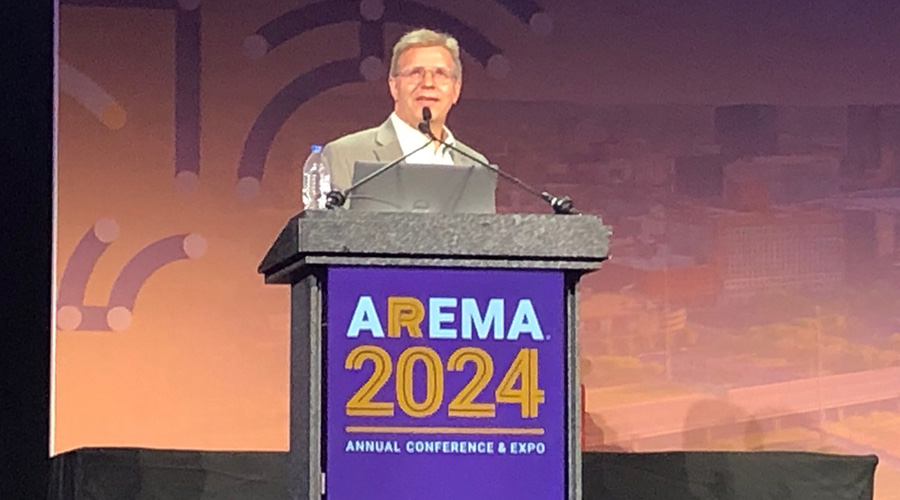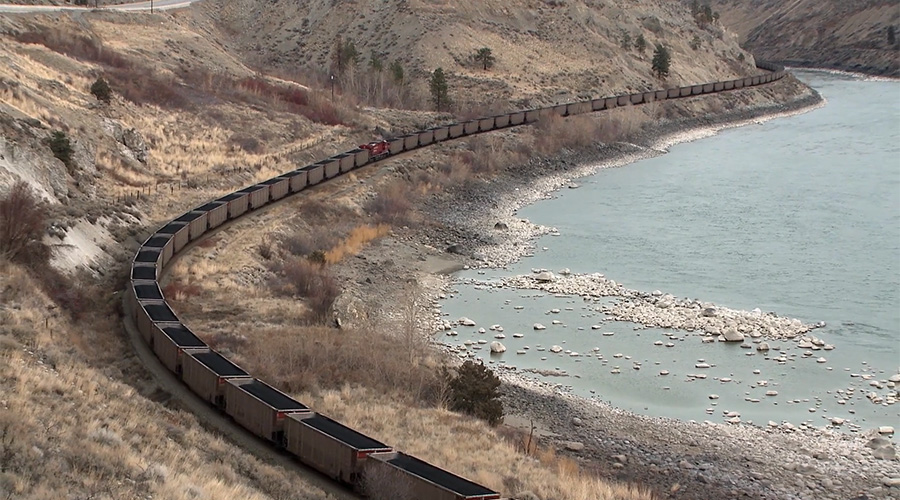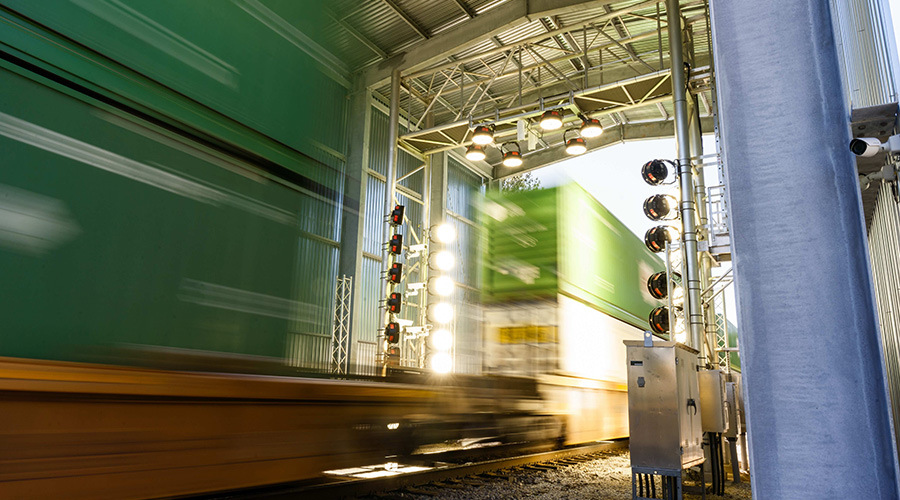Speakers cast a keen eye on emerging technologies at AREMA annual meeting
9/23/2024
By Jeff Stagl, Managing Editor
In 2022, the American Railway Engineering and Maintenance-of-Way Association (AREMA) introduced an emerging technologies panel to the general session of its annual conference and exhibition, which was held that year in Denver. The first-time presentation mostly focused on newfangled locomotives, such as hydrogen and battery-electric motive power.
The second such general session panel covered the same topic at AREMA’s 2023 conference in Indianapolis.
While introducing the third emerging technologies panel on Sept. 16 at the general session of the association’s 2024 conference and exhibition in Louisville, Kentucky, ARE Corp. President and CEO Walter Bleser said it was time to change things up.
“We are going to broaden the discussion from locomotives to other technologies,” said Bleser, an AREMA functional group vice president who moderated the panel.
So, the two speakers — Norfolk Southern Railway Senior Director of Engineering Dustin Lange and Parallel Systems Head of Strategy Marty Schlenker — proceeded to do just that.
Embracing technologies is a part of NS’ overall strategy, which calls for driving sustainable growth and providing reliable service, said Lange.
 “This goes from finding a needle in a haystack to knowing exactly where the needle is.” — Dustin Lange, NS’ senior director of engineering Jeff Stagl
“This goes from finding a needle in a haystack to knowing exactly where the needle is.” — Dustin Lange, NS’ senior director of engineering Jeff StaglFor example, the Class I continues to implement digital train inspection (DTI) portals, which are “a game changer for the industry,” he said. The portals were developed in collaboration with the Georgia Tech Research Institute and in partnership with the railroad’s data science team.
Each DTI portal is equipped with machine vision inspection technology featuring trackside cameras and stadium lighting to capture ultra-high-resolution, 360-degree images of passing rail cars.
The synchronized cameras can capture 1,000 images of every rail car as trains pass through at speeds up to 70 mph, detecting defects at angles that typically are difficult to view during stationary visual inspections. Images are then analyzed by advanced artificial intelligence (AI) algorithms developed by the data science team.
“This goes from finding a needle in a haystack to knowing exactly where the needle is. The images lead inspectors to the problems,” said Lange. “AI finds it; the pros fix it.”
NS deployed its first DTI portal in Leetonia, Ohio, in October 2023. Six more portals are anticipated to be fully operational by the end of 2024, with 11 more portals expected by 2026.
NS also continues to implement and refine an autonomous track inspection (ATI) platform launched in 2018. Considered a “system of systems,” the autonomous track geometry measurement system is mounted on a locomotive, said Lange.
The ATI platform features lasers, gyros, accelerometers and global positioning system sensors to detect defects or anomalies in track geometry, including track gauge. It transmits inspection data wirelessly to office locations, where track geometry engineers confirm potential defects and notify track maintenance personnel.
 “The goal is to not replace but augment today’s trains. The vehicles plug into the truck-based supply chain.” — Marty Schlenker, Parallel Systems’ head of strategy Jeff Stagl
“The goal is to not replace but augment today’s trains. The vehicles plug into the truck-based supply chain.” — Marty Schlenker, Parallel Systems’ head of strategy Jeff Stagl“ATI generates predictive models to identify [problem] locations prior to degradation,” said Lange.
ATI is designed to provide timely and accurate data that can be used for track maintenance activities and capital budgeting. It supplements track testing performed by the railroad’s existing fleet of manned track geometry cars and hi-rail trucks.
NS plans to upgrade ATI’s capabilities, including the addition of an optical system to evaluate track components such as fasteners, rail welds and switch points. The railroad has logged 15,000 miles with 10 locomotives equipped with ATI so far, and the goal is to equip 12 more with the platform in the near future, said Lange.
For Parallel Systems, the ultimate goal is to get railroads to adopt its battery-electric rail vehicles, said Schlenker. The vehicles are designed to ship containers by rail by enabling short-haul and point-to-point rail movements.
Each vehicle is individually powered and self-navigates to a destination, he said, adding that the vehicles don’t need to couple or uncouple. Platoons of up to 50 vehicles can be formed to reduce energy consumption and more efficiently use available rail network capacity, said Schlenker, who previously held upper management positions at BNSF Railway Co. and CSX.
Parallel Systems’ software is designed to integrate seamlessly with existing yard and mainline train-control systems. The company is developing onboard algorithms to enhance vehicle movement safety.
“The goal is to not replace but augment today’s trains,” said Schlenker. “The vehicles plug into the truck-based supply chain. They move independently like trucks. This eliminates [rail-car] aggregation, sorting and waiting.”
The vehicles have undergone control, telemetry, traction, brake and dynamics testing on Parallel Systems’ test track in southern California. Track-worthiness testing is underway at MxV Rail in Pueblo, Colorado.
Genesee & Wyoming Inc. is seeking Federal Railroad Administration approval to conduct a pilot program with the vehicles at the Heart of Georgia and Georgia Central railroads.
Parallel Systems and G&W have been awaiting that approval for some time, said Schlenker. The company’s immediate objective is to reach mainline track testing, he added.


